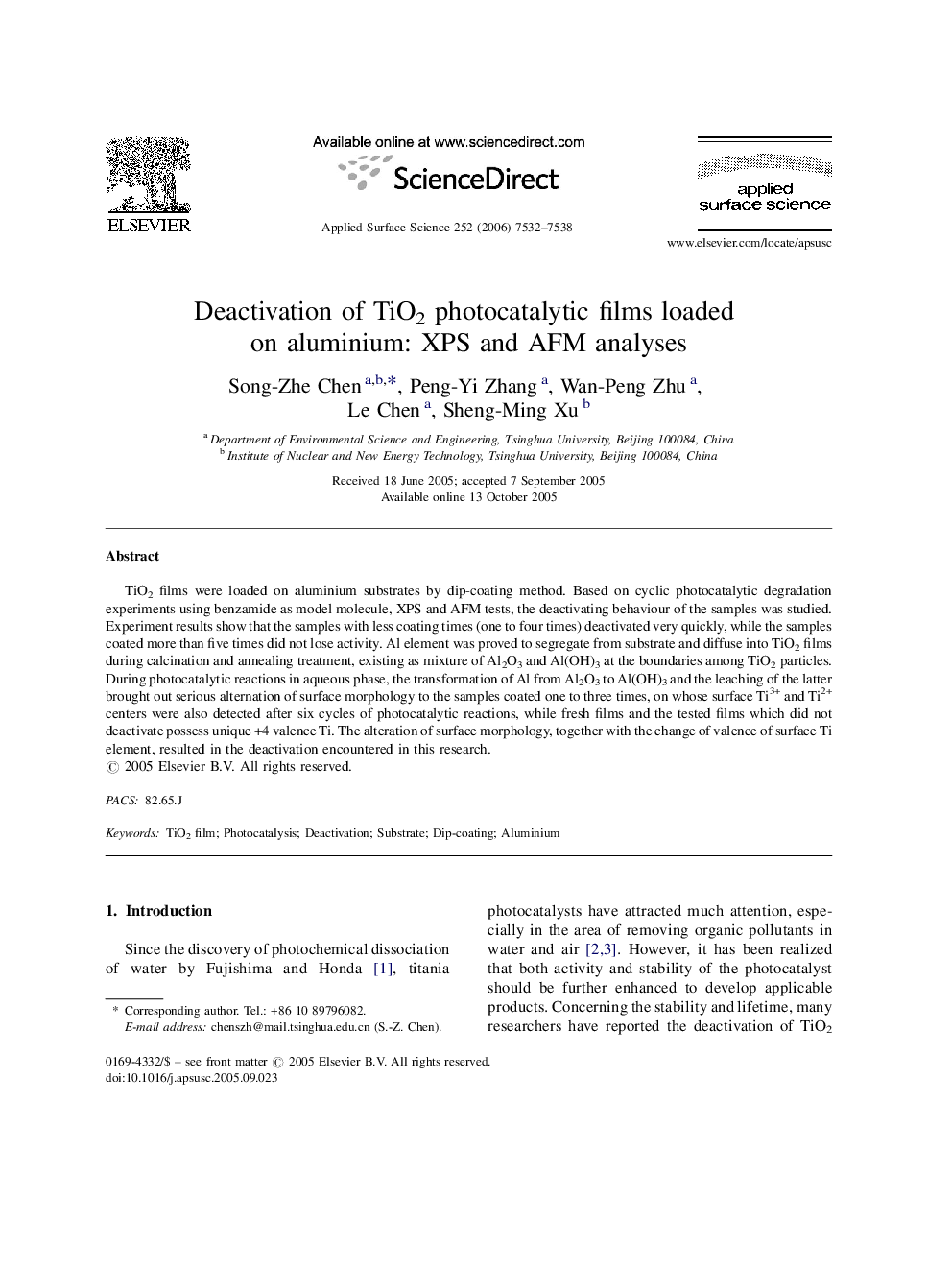| Article ID | Journal | Published Year | Pages | File Type |
|---|---|---|---|---|
| 5365776 | Applied Surface Science | 2006 | 7 Pages |
TiO2 films were loaded on aluminium substrates by dip-coating method. Based on cyclic photocatalytic degradation experiments using benzamide as model molecule, XPS and AFM tests, the deactivating behaviour of the samples was studied. Experiment results show that the samples with less coating times (one to four times) deactivated very quickly, while the samples coated more than five times did not lose activity. Al element was proved to segregate from substrate and diffuse into TiO2 films during calcination and annealing treatment, existing as mixture of Al2O3 and Al(OH)3 at the boundaries among TiO2 particles. During photocatalytic reactions in aqueous phase, the transformation of Al from Al2O3 to Al(OH)3 and the leaching of the latter brought out serious alternation of surface morphology to the samples coated one to three times, on whose surface Ti3+ and Ti2+ centers were also detected after six cycles of photocatalytic reactions, while fresh films and the tested films which did not deactivate possess unique +4 valence Ti. The alteration of surface morphology, together with the change of valence of surface Ti element, resulted in the deactivation encountered in this research.
